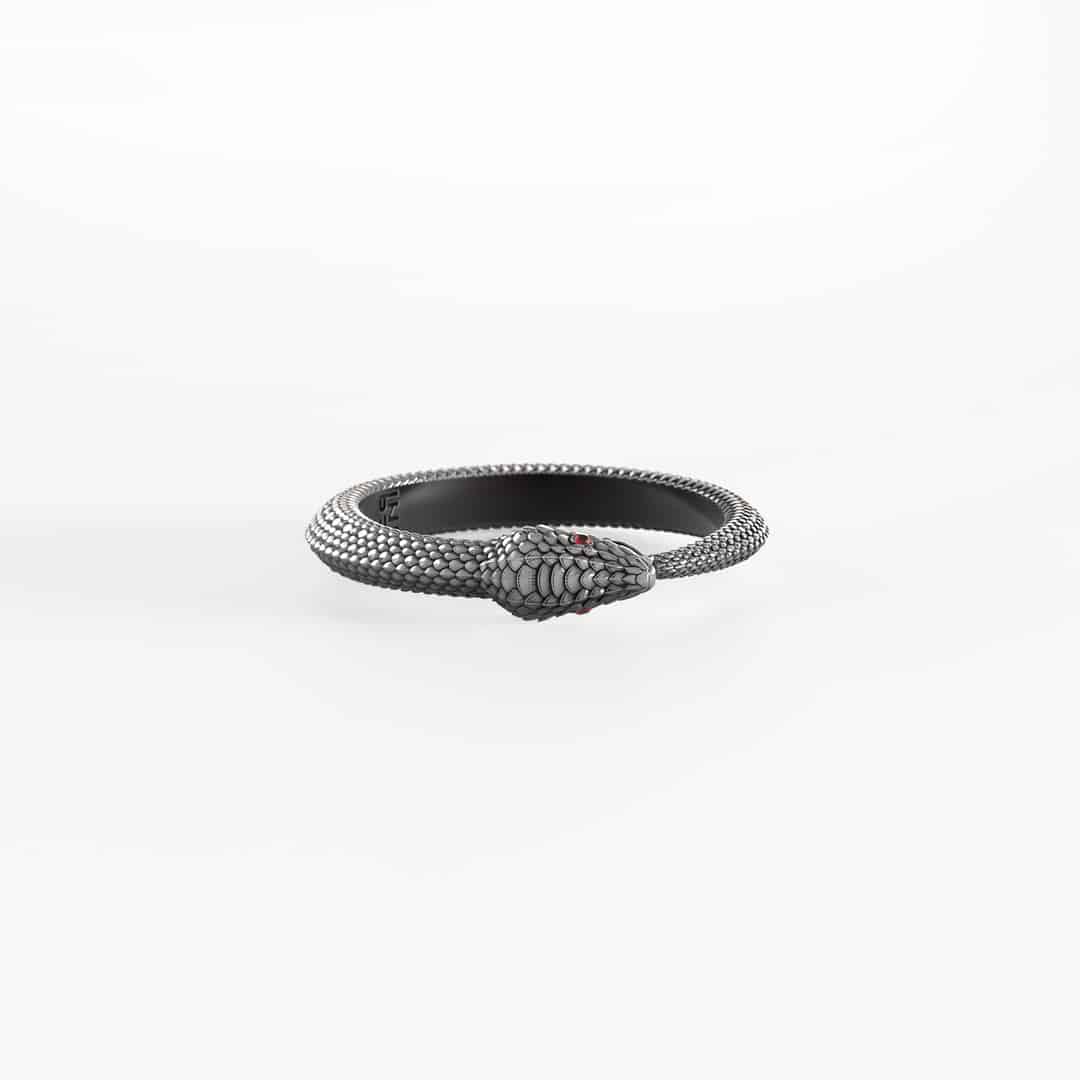BLACK FRIDAY – Only for Newsletter subscribers
Would you like to receive your order by CHRISTMAS? Make your purchase by December 1st.
Would you like to receive your order by ❤️ VALENTINE’S DAY? Make your purchase by January 25th.
CHRISTMAS CLOSURE – New orders will be processed from 8 January 2025
SUMMER CLOSURE 2024 – New orders will be processed from 19 August 2024 – 10% on the entire Shop
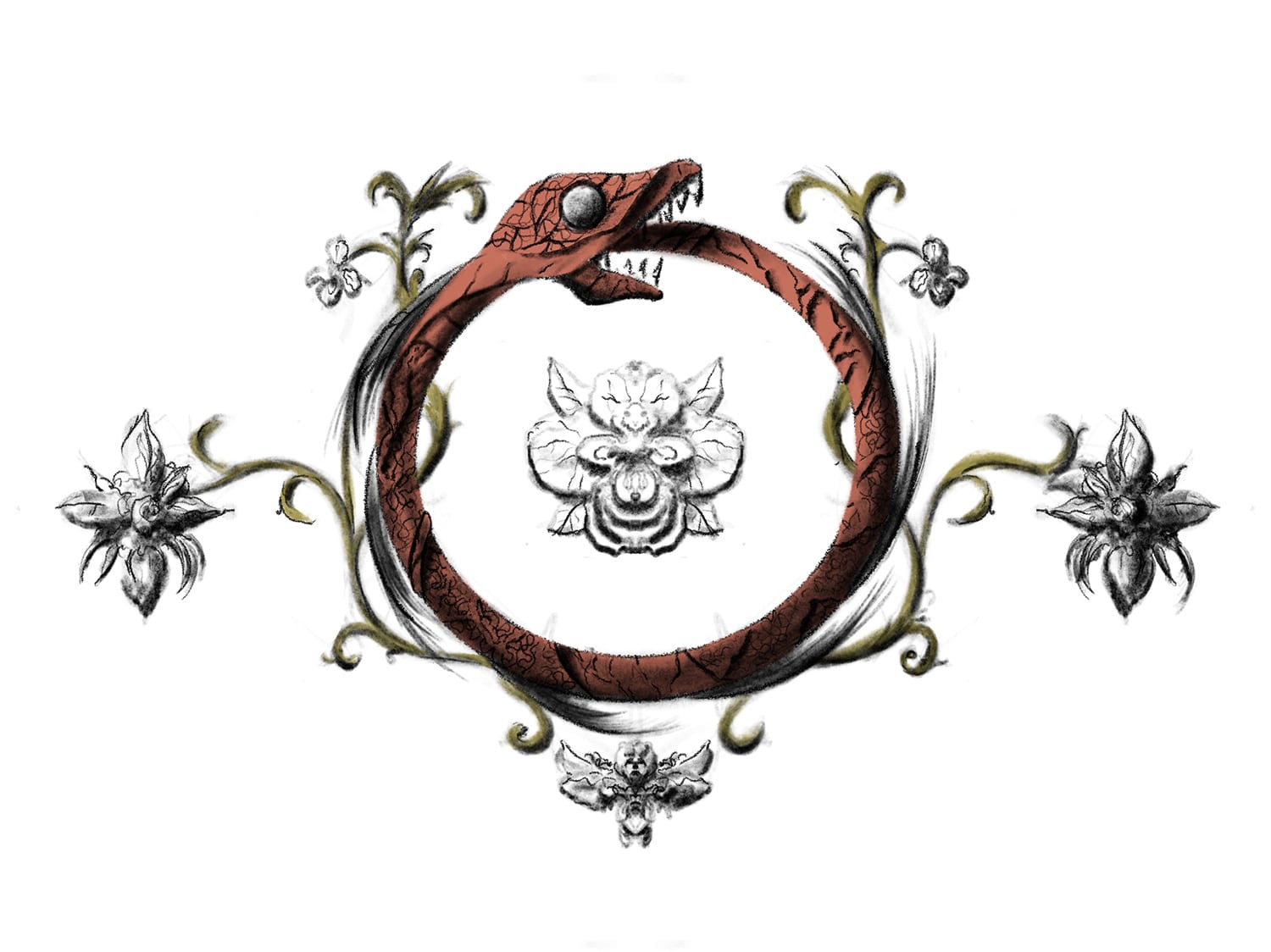
The Ouroboros is an ancient and intriguing symbol that has fascinated cultures and philosophers for centuries. Depicted as a snake or a dragon biting its tail, this enigmatic symbol represents fundamental concepts of life and nature. In this article, we will explore the origins of Uroboro, its interpretations and its symbolic significance in different cultural traditions.
Ouroboro is one of the oldest and most mysterious symbols in the history of humanity. We find it in different civilizations, from Egyptian to Greek, from Nordic to Indian. But what is Uroboro and why has it fascinated so many cultures?
Its representation of a snake biting its tail, without a beginning and without an end, suggests an eternal cycle: apparently motionless, but in eternal movement. Its symbolic meaning has had many interpretations, but in particular it represents the concept of eternity, cyclicity and rebirth. This cyclicity can be reviewed in the seasons, in life and death, and even in the cycle of the universe itself: a universal energy that is continually consumed and renewed.
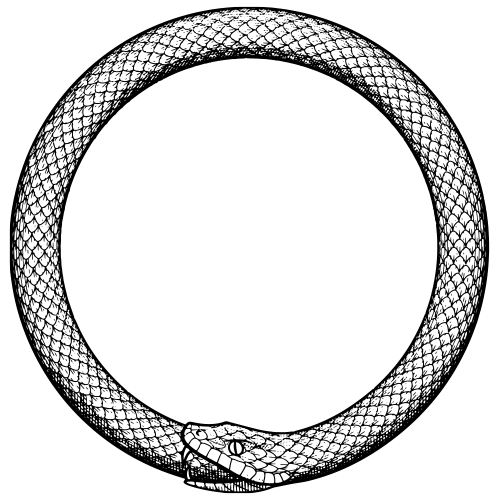
Ouroboros has an ancient and rich history dating back to ancient times. The first traces of this symbol can be found in ancient civilizations such as the Egyptians, the Greeks and the Romans.
Its origins seem to derive from the Egyptian culture: the oldest representation of an ouroboros is found in an ancient Egyptian funerary text, called “The Enigmatic Book of the Netherworld“, depicted in the tomb of the Pharaoh Tutankhamun of the XVIII Dynasty. In the work Hieroglyphika, dealing with the Egyptian hieroglyphs of the 4th -5th century AD. Orapollo states that it symbolizes the Universe and its cycle of renewal: “When they want to represent the universe, they draw a serpent with the body mottled by variegated scales that eat the tail; with the scales they intend to allude covertly to the existing stars in the universe It is very heavy like the earth and slippery like water; every year the snake strips itself of old age, in the same way as the annual cycle in the universe, which by making a mutation is renewed. The fact that it feeds on its body, finally, indicates that all things, which in the universe are generated by divine providence, return to resolve themselves”.
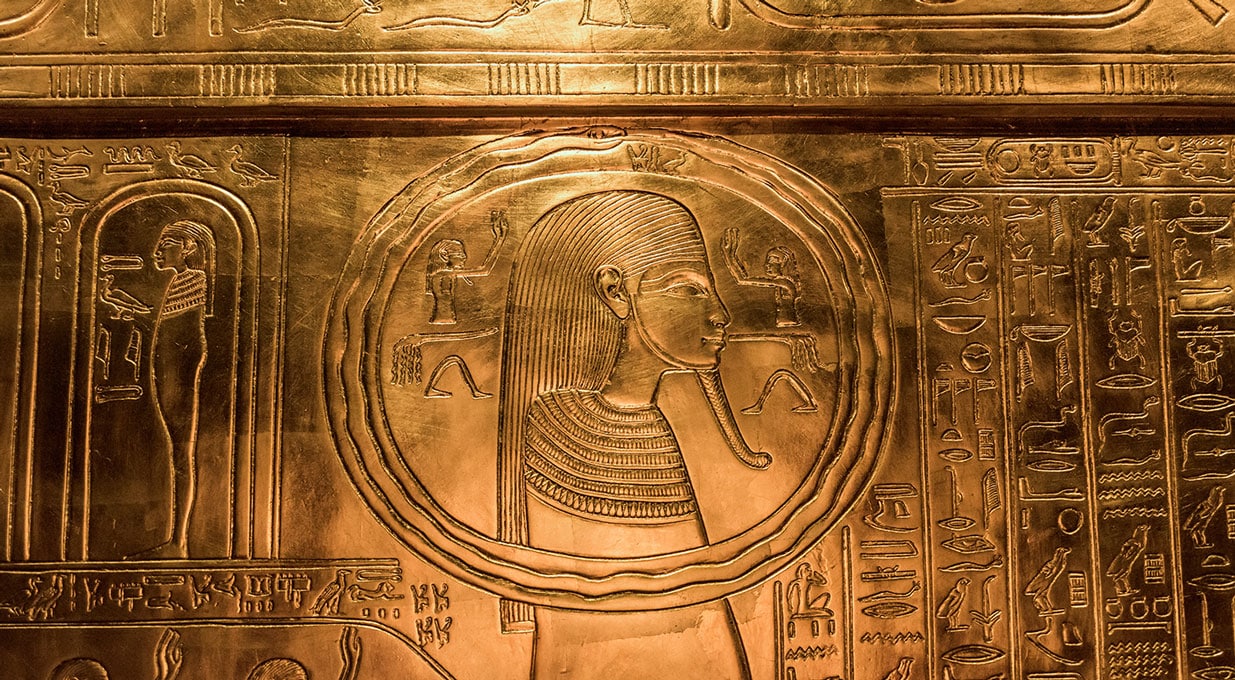
In ancient Egypt, the ouroboros can represent the primordial serpent, called Sata that surrounds the world protecting it from cosmic enemies; it was also associated with the goddess Uadjet, symbol of protection and eternity. It represented, in particular, the eternal cycle of life, death and rebirth.

It is heavy as the earth
and slippery as water.Orapollo
The origins of the symbol ouroboros can also be traced back to ancient Greece, where it was often linked to the concept of eternal return, the infinite history, symbolizing the infinite cycle of time and the universe. He was associated with figures such as Ouroboros, a divine serpent, and Dionysus, god of wine, fertility and the cycle of nature. Not only that, for the Greek alchemists ouroboros is a palingenetic symbol (from the Greek πάλιν, Palin, “again” and γένεσις, génesis, “creation, birth”, that is “born again“) representing the alchemical process: the cyclic succession of distillations and condensations necessary to purify and bring to perfection the “Raw Material”.
In Roman mythology, ouroboros had a similar association with the concept of eternal return and circularity. The snake biting its tail was seen as a symbol of continuity and constant renewal.
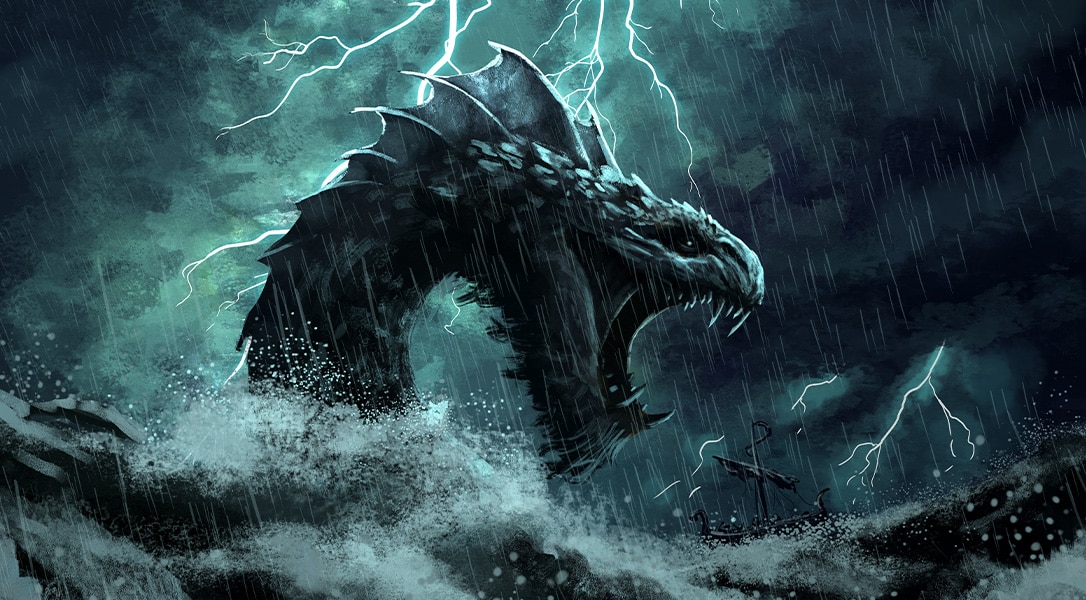
According to legend, Jormungandr surrounded the Earth and bit his tail, symbolizing the cyclicity of nature and the conflict between good and evil.
Despite its ancient roots, Uroboro continues to be an important symbol in contemporary culture. This timeless symbol has continued to inspire and influence contemporary art, providing new interpretations. It is often used in the artistic and literary field to explore themes such as the cyclical nature of existence and self-reflection, but it also takes on different meanings.
For example in “The NeverEnding Story“, a famous film of 1984 directed by Wolfgang Petersen, inspired by the novel of the same name by Michael Ende published in 1979, we find a very particular medallion: the Auryn, so it is called, formed by two snakes that bite their tails, similar to the Uroboro. In this context it not only has a meaning of eternity, but the two snakes represent reality and fantasy, which are a nourishment of the other and at the same time are born from the mouth of the other.
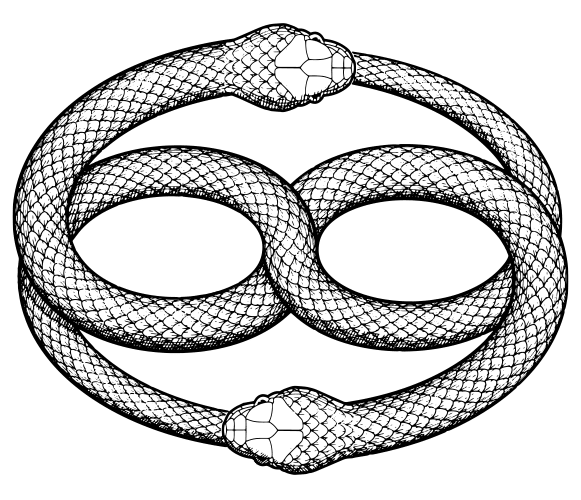
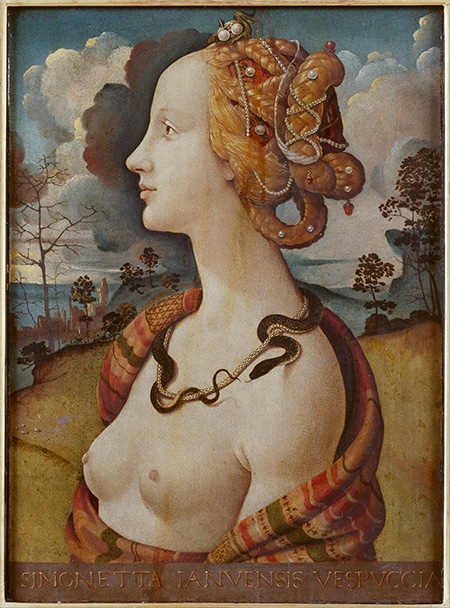
In the Portrait of Simonetta Vespucci as Cleopatra by Piero di Cosimo in 1480, the snake twists around the woman’s neck. This painting is often interpreted as a reference to the myth of Cleopatra, as Simonetta is seen as the reincarnation of the Egyptian queen. The serpent, interpreted as ouroboros, could symbolize immortality or the passage from earthly to spiritual life.
Examples of Uroboro are also found in funerary art: in the funeral monument to Maria Cristina of Austria of 1805, Antonio Canova places on the top of the pyramid a medallion with the bust of the deceased enclosed in an Uroboro. Instead, in the Pantheon of Rome, on the funeral monument to Cardinal Consalvi, the sculptor Bertel Thorvaldsen depicted a Roboro surrounding the Christogram.
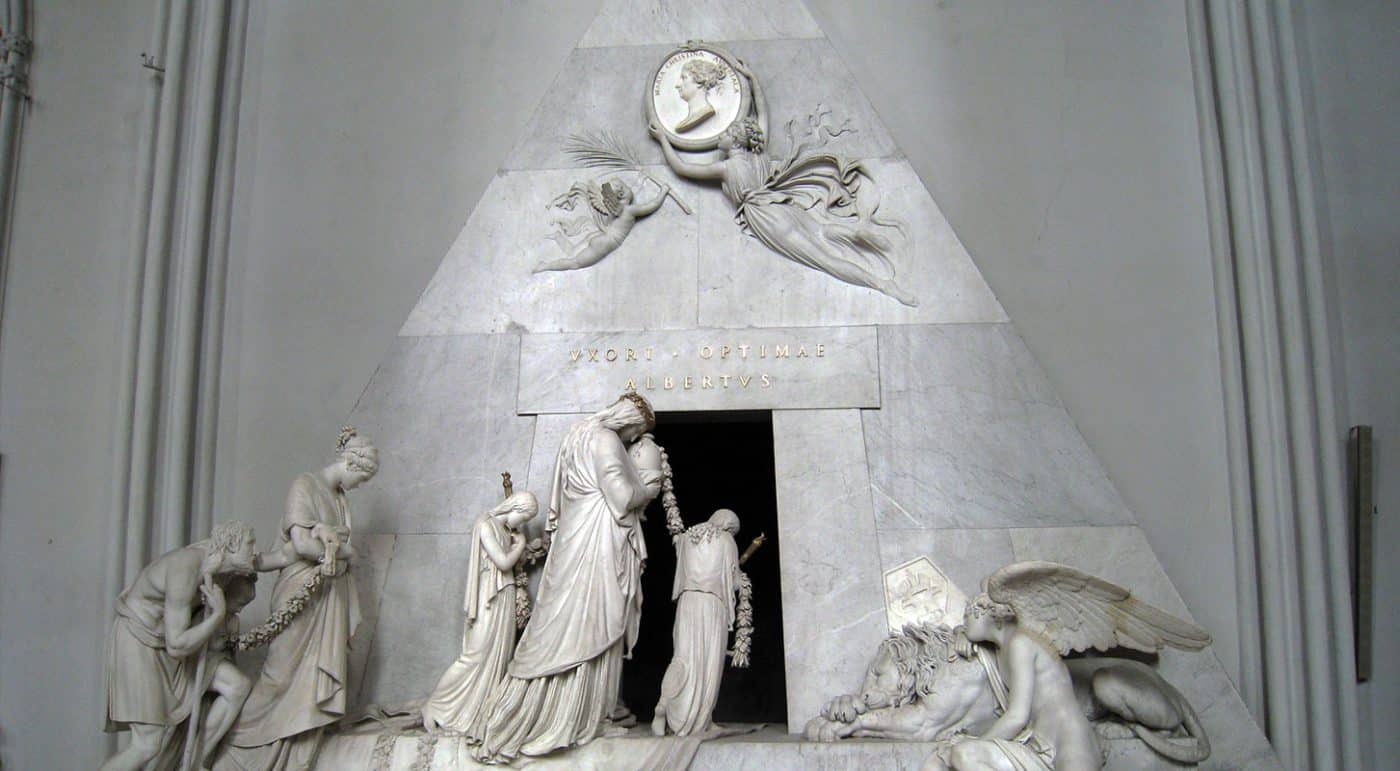
One of these prints is entitled Ouroboros: this figure has characteristics similar to those of an eel or a sea serpent; Dalí decides to represent the decomposing snake in pieces to represent the alchemical stage of putrefaction, but despite being cut into many pieces, the head biting the tail remains one. The Uroboro keeps its circular shape, however the decision to represent the snake cut into many pieces has a very precise meaning: the dead Ouroboros, symbol of eternity, is now subjected to the effects of time.
In 1894 the Austrian Ministry of Education commissioned Gustav Klimt and Franz Matsch to create a series of allegories for the ceiling of the Aula Magna of the University of Vienna in which Klimt would make three of the four panels, Hence the Paintings of the faculty of this artist.
In the painting Medicine, Klimt depicts Hygieia, the goddess of health, with a golden snake around her arm. The work was harshly criticized because in the representation Klimt does not celebrate the progress and the healing power of medicine, but the insufficiency of the same in the face of the inevitable transition from life to death. In this work Klimt tells the succession of all the events of human existence, celebrates “the eternal return” of Nietzsche through the figure of the snake, which is a clear reference to the symbol of ouroboros.
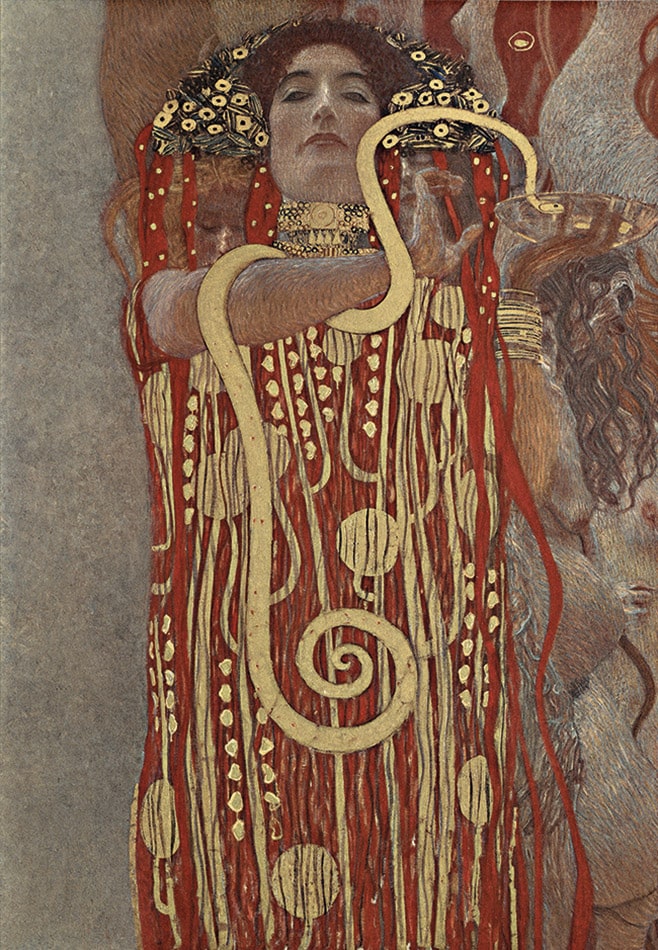
As we can see, Uroboro from its original meaning of eternal return, cyclicality, rebirth, takes on different meanings according to the time in which we find it, but also according to the interpretation that we want to give it. His infinite interpretations inspired our collection “Snakes” and especially our rings Uroboro Feel No Pain.
Ouroboros has been cited and interpreted in different psychological contexts by various scholars and theorists. It is often associated with the concept of self-consciousness, the idea of looking within oneself and the cyclicity of time.
For the psychologist Nietzsche, Uroboro represents the concept of “eternal return“, that is, the idea that time and the world are cyclical and that every event is repeated endlessly. In works such as “The Joyful Wisdom” and “Thus Spoke Zarathustra: A Book for All and None” he alludes to the fact that, being the things of the world finite while time is infinite, everything is destined to replicate, to repeat in some way, including our lives. The symbolic representation of this “eternal return” is the Ouroboros serpent, which Nietzsche recovers from the tradition of Gnosticism and Hermeticism. It represents the cyclical structure of time and the world, and the fact that every end always constitutes a new beginning. Quotes:

That everything returns, is the extreme approach
of the world of becoming to that of being:
culmination of contemplation.Nietzsche
For Carl Jung, Uroboro has a deep meaning within his psychological theory. He interprets Uroboro as a symbol of the archetype of individuation, which represents the process of personal growth and development. The Uroboro symbolizes the cyclicality of life, but also the totality and the identification: a process of self-realization, of unification, in which the whole experience of personality develops. In his perspective, the individual is pushed towards self-understanding and the attainment of greater awareness. In short, for Jung, Uroboro is a symbol of inner transformation, personal evolution and integration.
For the German psychoanalyst of the ‘900 Erich Neumann Uroboro symbolizes the primordial unity and integration, depicting the interconnection between the unconscious and the conscious. This symbol represents the totality of the individual: an image that expresses the idea of a cycle of rebirth and personal development. In essence, for Neumann, Uroboro represents the aspiration of the individual towards integration and the attainment of greater self-awareness.
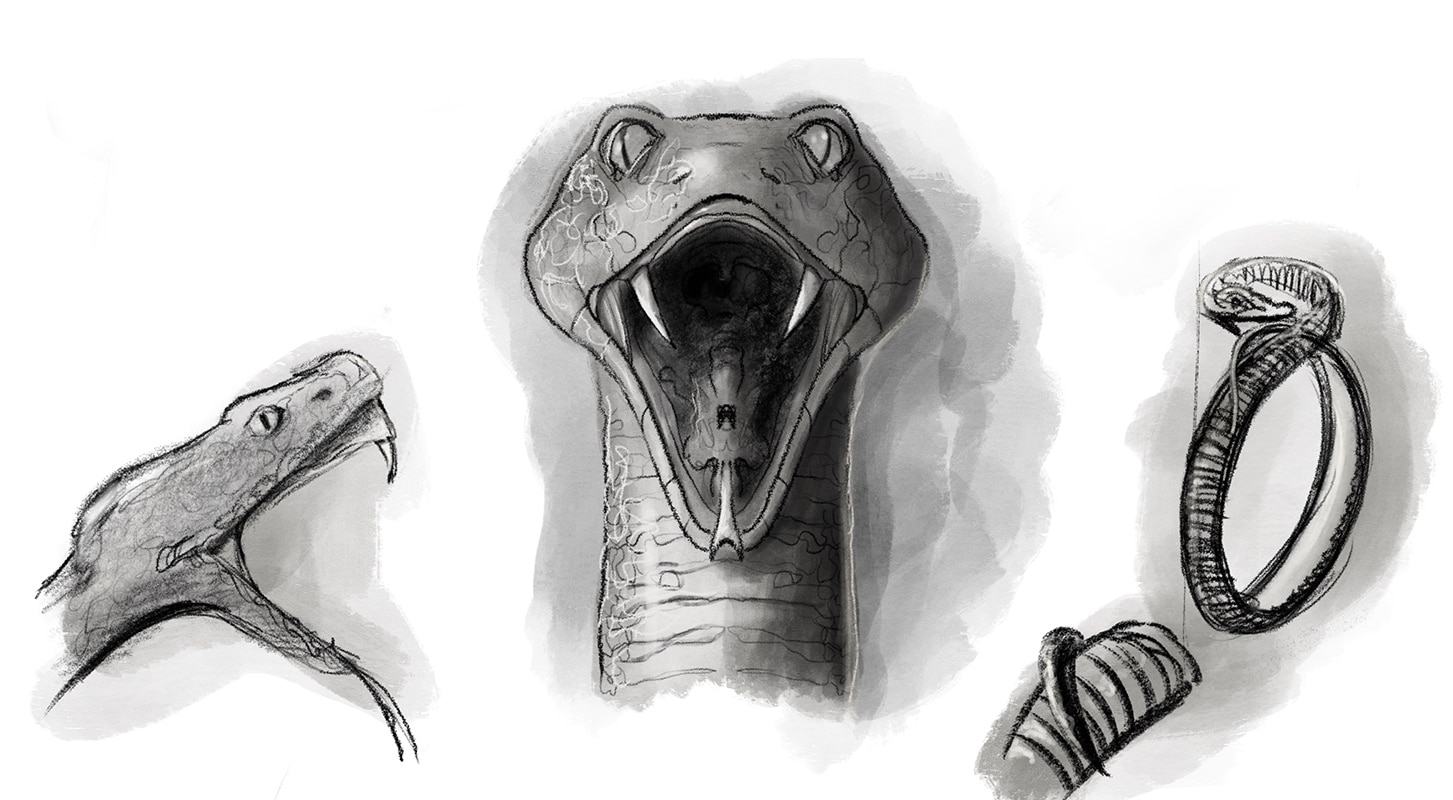
Ouroboros continues to be an important symbol in today’s culture. This timeless symbol has continued to influence not only painting, contemporary art or psychology, but it is also becoming a popular option as a tattoo or as a jewel since Uroboro reminds us of the cyclical nature of life and that everything is in a constant stream of creation, destruction and re-creation. It reminds us that all things are interconnected and that the circle will eventually close.
In our collection “Snakes” we have decided to represent Uroboro in two different facets. The Uroboro Classic Snake Ring, made of 925 silver, forms a perfect circle in the act of biting its own tail. Eyes, body and scales are finished in every detail by Italian goldsmiths, simulating snake flowing around the finger. In FNP style, the depiction is inspired by the true anatomy of the snake, showing in great detail one of the most enigmatic creatures known to man. In this ring the snake forms an infinite circle, mobile and immobile, which represents time in its cyclicality, but also perfection, birth and death, eternity. A unique jewel for anyone who wants to celebrate the cyclicity of time and eternal perfection.
Instead, the Ouroboros Snake Ring bends over itself and has its jaws wide open to allow its own tail, however this time not in a perfect circle like in the Classic Ouroboros, but comes out of the circumference. This action represents of the rebellion, the rupture, the struggle of those who do not surrender to fate. In the act of the Ouroboros coming out of the infinite circle there is the power of those who have the strength to fight against what would be destined to repeat itself, against destiny, against what is already determined by others. A unique ring for anyone who wants to create their own way without surrendering to fate.
The Ouroboros remains a fascinating and powerful puzzle, which continues to inspire and stimulate human thought. Its graphic representation of a snake or a dragon biting its tail reminds us of the infinite cycle of life, the process of rebirth and the continuous evolution of the universe. This timeless symbol invites us to reflect on our existence and offers us the opportunity to embrace change as an essential part of our growth and our connection with the world around us.
